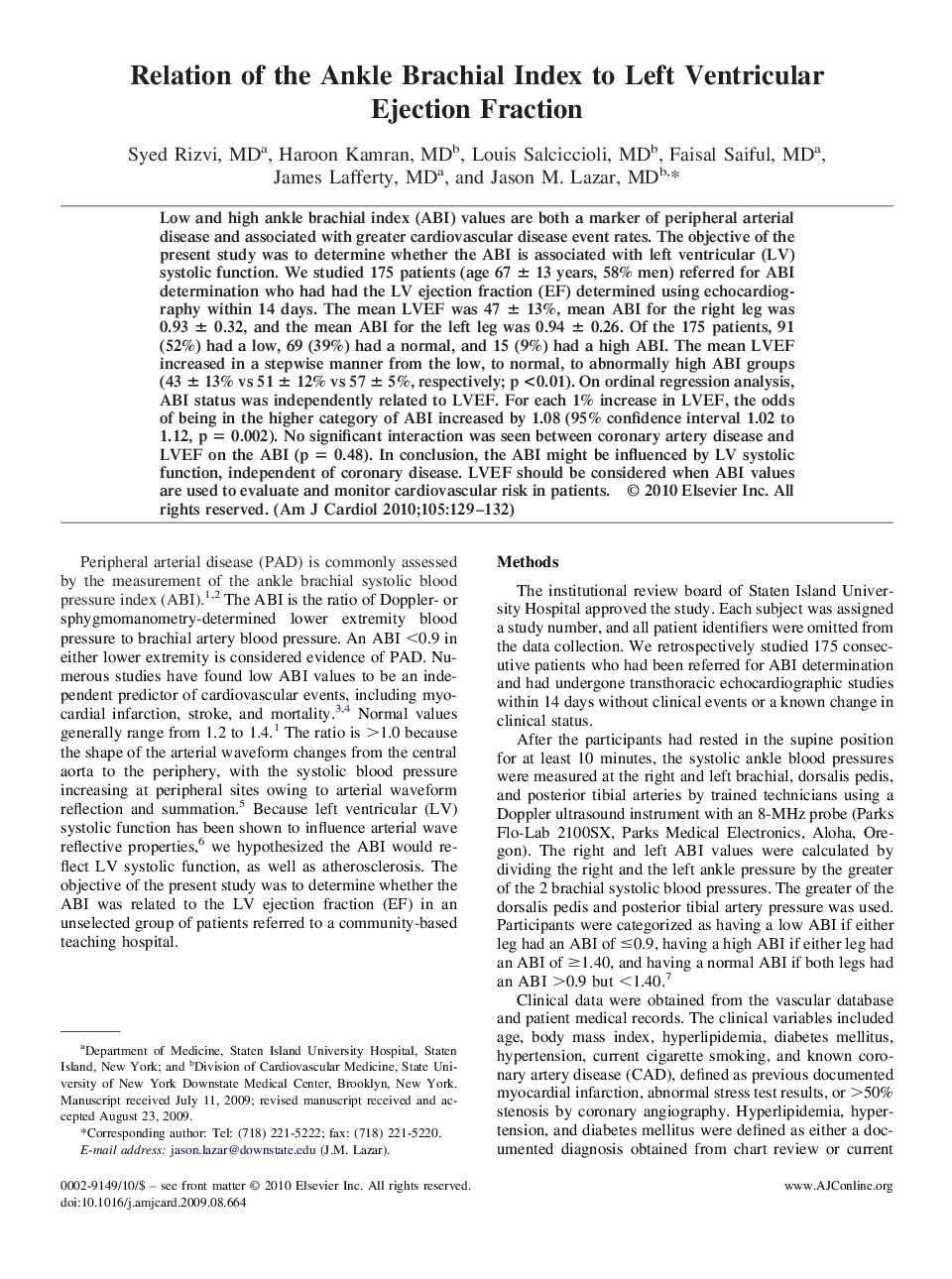| Article ID | Journal | Published Year | Pages | File Type |
|---|---|---|---|---|
| 2857606 | The American Journal of Cardiology | 2010 | 4 Pages |
Abstract
Low and high ankle brachial index (ABI) values are both a marker of peripheral arterial disease and associated with greater cardiovascular disease event rates. The objective of the present study was to determine whether the ABI is associated with left ventricular (LV) systolic function. We studied 175 patients (age 67 ± 13 years, 58% men) referred for ABI determination who had had the LV ejection fraction (EF) determined using echocardiography within 14 days. The mean LVEF was 47 ± 13%, mean ABI for the right leg was 0.93 ± 0.32, and the mean ABI for the left leg was 0.94 ± 0.26. Of the 175 patients, 91 (52%) had a low, 69 (39%) had a normal, and 15 (9%) had a high ABI. The mean LVEF increased in a stepwise manner from the low, to normal, to abnormally high ABI groups (43 ± 13% vs 51 ± 12% vs 57 ± 5%, respectively; p <0.01). On ordinal regression analysis, ABI status was independently related to LVEF. For each 1% increase in LVEF, the odds of being in the higher category of ABI increased by 1.08 (95% confidence interval 1.02 to 1.12, p = 0.002). No significant interaction was seen between coronary artery disease and LVEF on the ABI (p = 0.48). In conclusion, the ABI might be influenced by LV systolic function, independent of coronary disease. LVEF should be considered when ABI values are used to evaluate and monitor cardiovascular risk in patients.
Related Topics
Health Sciences
Medicine and Dentistry
Cardiology and Cardiovascular Medicine
Authors
Syed MD, Haroon MD, Louis MD, Faisal MD, James MD, Jason M. MD,
